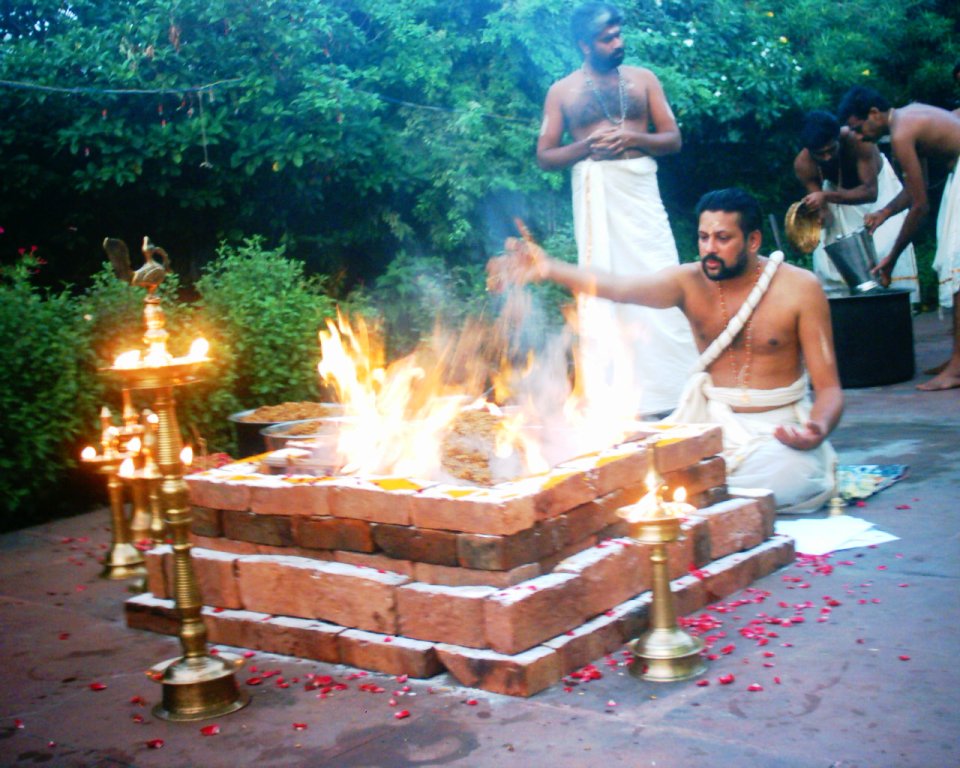|
Kathopanishad
The ''Katha Upanishad'' (Sanskrit: कठोपनिषद् or कठ उपनिषद्) (') is one of the ''mukhya'' (primary) Upanishads, embedded in the last eight short sections of the ' school of the Krishna Yajurveda.Paul Deussen. ''Sixty Upanishads of the Veda''. Volume 1, Motilal Banarsidass. . pages 269-273 It is also known as ' Upanishad, and is listed as number 3 in the Muktika canon of 108 Upanishads. The Katha Upanishad consists of two chapters (''Adhyāyas''), each divided into three sections (''Vallis''). The first ''Adhyaya'' is considered to be of older origin than the second. The Upanishad is the legendary story of a little boy, Nachiketa – the son of Sage Vajasravasa, who meets Yama (the deity of death). Their conversation evolves to a discussion of the nature of man, knowledge, Atman (Self) and moksha (liberation). The chronology of Katha Upanishad is unclear and contested, but belongs to the later verse Upanishads, dated to the 5th to first centur ... [...More Info...] [...Related Items...] OR: [Wikipedia] [Google] [Baidu] |
Nachiketa
Nachiketa (), also rendered Nachiketas and Nachiketan, is a character in Hindu literature. He is the son of the sage Vājashravas, or Uddalaki, in some traditions. He is the child protagonist of an ancient Indian, dialogical narrative, about the nature of the atman (soul). His allegorical story is told in the Katha Upanishad (c. 9th century BCE), though the name has several earlier references. He was taught self-knowledge, knowledge about the atman (soul), and the Brahman (Ultimate Reality), by Yama, the god of righteousness. Nachiketa is noted for his rejection of material desires, which are ephemeral, and for his single-minded pursuit of the path of realising moksha. Etymology The Sanskrit name Nachiketa is composed of three syllables, each of which possess associated cognates: Literature Rigveda The Rigveda 10.135 talks of Yama and a child, who may be a reference to Nachiketa. Taittiriya Brahmana Nachiketa is also mentioned in the Taittiriya Brahmana, 3.1.8.'' ... [...More Info...] [...Related Items...] OR: [Wikipedia] [Google] [Baidu] |
Krishna Yajurveda
The ''Yajurveda'' ( sa, यजुर्वेद, ', from ' meaning "worship", and ''veda'' meaning "knowledge") is the Veda primarily of prose mantras for worship rituals.Michael Witzel (2003), "Vedas and Upaniṣads", in ''The Blackwell Companion to Hinduism'' (Editor: Gavin Flood), Blackwell, , pages 76-77 An ancient Vedic Sanskrit text, it is a compilation of ritual-offering formulas that were said by a priest while an individual performed ritual actions such as those before the yajna fire. Yajurveda is one of the four Vedas, and one of the scriptures of Hinduism. The exact century of Yajurveda's composition is unknown, and estimated by Witzel to be between 1200 and 800 BCE, contemporaneous with Samaveda and Atharvaveda. The Yajurveda is broadly grouped into two – the "black" or "dark" (''Krishna'') Yajurveda and the "white" or "bright" (''Shukla'') Yajurveda. The term "black" implies "the un-arranged, unclear, motley collection" of verses in Yajurveda, in contrast ... [...More Info...] [...Related Items...] OR: [Wikipedia] [Google] [Baidu] |
Katha Upanishad 1
Katha may refer to: * The Sanskrit for "speech, narration, real happening narration, fable", see Katha (storytelling format) * The Kaṭha or Caraka-Katha school of the Black Yajurveda ** Katha Upanishad, a Hindu text associated with the Katha school ** Katha Aranyaka, a Hindu text associated with the Katha school * Katha (unit), a unit of measurement, largely obsolete in India and Bangladesh but still used in Nepal * ''Katha'' (genus), a genus of moths Film * ''Katha'' (1983 film), a 1983 Hindi film * ''Katha'' (2009 film), a 2009 Telugu film *''Katha Nayakudu'', a 1969 Telugu film *'' Gadar: Ek Prem Katha'', a 2001 Bollywood movie *''Jagadeka Veeruni Katha'', a 1961 Telugu film *''Paramanandayya Shishyula Katha'', a 1966 Telugu film Literature * Katha Books, publishing house owned by Katha NGO in Delhi *''Amar Chitra Katha'', an Indian comic book series Places *Katha, Myanmar, a town in Sagaing Region of Myanmar **Katha District, a district in Katha town ***Katha T ... [...More Info...] [...Related Items...] OR: [Wikipedia] [Google] [Baidu] |
Eknath Easwaran
Eknath Easwaran (December 17, 1910 October 26, 1999) was an Indian-born spiritual teacher, author and translator and interpreter of Indian religious texts such as the '' Bhagavad Gita'' and the Upanishads. Easwaran was a professor of English literature at the University of Nagpur in India, and in 1959 he came to the United States as a Fulbright Scholar at the University of California, Berkeley where he taught courses on meditation. In 1961, Easwaran founded the Blue Mountain Center of Meditation and Nilgiri Press, based in northern California. Nilgiri Press has published over thirty books that he authored. Easwaran was influenced by Mahatma Gandhi, whom he met when he was a young man. Easwaran developed a method of meditation silent repetition in the mind of memorized inspirational passages from the world's major religious and spiritual traditions which later came to be known as Passage Meditation. Biography Eknath Easwaran was born in 1910 in a village in Kerala, India. "Eas ... [...More Info...] [...Related Items...] OR: [Wikipedia] [Google] [Baidu] |
Yama (Hinduism)
Yama ( sa, यम), also known as Kala, and Dharmaraja is the Hindu god of death and justice, responsible for the dispensation of law and punishment of sinners in his abode, Yamapuri. He is often identified with Dharmadeva, the personification of ''Dharma'', though the two deities have different origins and myths. In Vedic tradition, Yama was considered to be the first mortal who died and espied the way to the celestial abodes; thus, as a result, he became the ruler of the departed. His role, characteristics, and abode have been expanded in texts such as the ''Upanishads'', the ''Ramayana'', the ''Mahabharata'' and the ''Puranas''. Yama is described as the twin of Yami, and the son of the sun god Surya (in earlier traditions Vivasvat) and Sanjna. He judges the souls of the dead and depending on their deeds, he assigns them to the realm of the Pitris (forefathers), Naraka (hell), or be reborn on the earth. Yama is aided by the god Chitragupta, who keeps a record of ever ... [...More Info...] [...Related Items...] OR: [Wikipedia] [Google] [Baidu] |
Yama Teaches Nasiketha
Yama (Devanagari: यम) or Yamarāja (यमराज), is a deity of death, dharma, the south direction, and the underworld who predominantly features in Hindu and Buddhist religion, belonging to an early stratum of Rigvedic Hindu deities. In Sanskrit, his name can be interpreted to mean "twin". He is also an important deity worshipped by the Kalasha and formerly by the Nuristani peoples, indicating his prominence in ancient Hinduism. In Hinduism, Yama is the son of sun-god SuryaEffectuation of Shani Adoration pp. 10–15. and , the daughter of |
The Principal Upanishads (book)
''The Principal Upanishads'' is a 1953 book written by Sarvepalli Radhakrishnan (1888–1975), then Vice President of India (and later President of India), about the main Upanishads, which carry central teachings of the Vedanta. Originally published in 1953 by Harper, the book has been republished several times. All editions have had 958 pages and have used the same title, although the spelling of "Upanishads" has varied slightly between editions and their listing elsewhere (the retroflex "sh" has also been represented as "ṣ" or as "ṣh"). Outline of book Radhakrishnan's ''The Principal Upanishads'' begins with a 129-page introduction, with the following 19 section headers: General Influence; The Term 'Upaniṣad'; Number, Date and Authorship; The Upaniṣads as the Vedānta; Relation to the Vedas: The ''Ṛg Veda''; The ''Yajur'', the ''Sāma'' and the ''Atharva Vedas''; The Brāhmanas; The Āranyakas; The Upaniṣads; Ultimate Reality: Brahman; Ultimate Reality: Ātman; ... [...More Info...] [...Related Items...] OR: [Wikipedia] [Google] [Baidu] |
Taittiriya Brahmana
The ''Taittirīya Shakha'' (Sanskrit, loosely meaning 'Branch or School of the sage Tittiri'), is a ''shakha'' (i.e. 'branch', 'school', or rescension) of the Krishna (black) Yajurveda. Most prevalent in South India, it consists of the ''Taittirīya Samhita'' ('TS'), ''Taittirīya Brahmana'' ('TB'), ''Taittirīya Aranyaka'' ('TA'), and ''Taittirīya Pratisakhya'' ('TP'). Nomenclature The 'Taittiriya Shakha' can be loosely translated as 'Branch or School of (the sage) Tittri' or 'Branch or School of Taittiriya' or 'School of the pupils of Tittiri'. *'Taittiriya' is derived from the name of the sage Taittiri (or Tittiri). *'Shakha' means 'branch' or 'school'. Origin Monier-Williams According to Monier-Williams ''Sanskrit-English Dictionary'', Taittiri was a pupil of Yaska (estimated 4th-5th century BCE). According to the Vishnu Purana, Yaska was in turn a pupil of Vaiśampáyana, (estimated 6th century BCE). Taittiri is also stated in the Mahabharata to have attend ... [...More Info...] [...Related Items...] OR: [Wikipedia] [Google] [Baidu] |
Vine
A vine ( Latin ''vīnea'' "grapevine", "vineyard", from ''vīnum'' "wine") is any plant with a growth habit of trailing or scandent (that is, climbing) stems, lianas or runners. The word ''vine'' can also refer to such stems or runners themselves, for instance, when used in wicker work.Jackson; Benjamin; Daydon (1928). ''A Glossary of Botanic Terms with their Derivation and Accent'', 4th ed. London: Gerald Duckworth & Co. In parts of the world, including the British Isles, the term "vine" usually applies exclusively to grapevines ('' Vitis''), while the term "climber" is used for all climbing plants. Growth forms Certain plants always grow as vines, while a few grow as vines only part of the time. For instance, poison ivy and bittersweet can grow as low shrubs when support is not available, but will become vines when support is available. A vine displays a growth form based on very long stems. This has two purposes. A vine may use rock exposures, other plants, or o ... [...More Info...] [...Related Items...] OR: [Wikipedia] [Google] [Baidu] |
Paul Deussen
Paul Jakob Deussen (; 7 January 1845 – 6 July 1919) was a German Indologist and professor of philosophy at University of Kiel. Strongly influenced by Arthur Schopenhauer, Deussen was a friend of Friedrich Nietzsche and Swami Vivekananda. In 1911, he founded the Schopenhauer Society (''Schopenhauer-Gesellschaft''). Professor Deussen was the first editor, in 1912, of the scholarly journal Schopenhauer Yearbook (''Schopenhauer-Jahrbuch''). Deussen, who Sanskritised his name to "Deva-Sena" as a mark of his admiration for the language, is one of the distinguished roll of Europeans who — often with lyrical admiration — participated in the scholarly Western discovery of Sanskrit and Hinduism that took place in British India itself, Germany, France and England. Biography Paul Deussen was born on 7 January 1845 in Oberdreis, Neuwied in the Rhine Province, one of eight children of a clergyman of modest means. He became a student, and lifelong devotee, of the German philosopher Sc ... [...More Info...] [...Related Items...] OR: [Wikipedia] [Google] [Baidu] |
Ralph Waldo Emerson
Ralph Waldo Emerson (May 25, 1803April 27, 1882), who went by his middle name Waldo, was an American essayist, lecturer, philosopher, abolitionist, and poet who led the transcendentalist movement of the mid-19th century. He was seen as a champion of individualism and a prescient critic of the countervailing pressures of society, and his ideology was disseminated through dozens of published essays and more than 1,500 public lectures across the United States. Emerson gradually moved away from the religious and social beliefs of his contemporaries, formulating and expressing the philosophy of transcendentalism in his 1836 essay "Nature". Following this work, he gave a speech entitled " The American Scholar" in 1837, which Oliver Wendell Holmes Sr. considered to be America's "intellectual Declaration of Independence."Richardson, p. 263. Emerson wrote most of his important essays as lectures first and then revised them for print. His first two collections of essays, '' Essays: ... [...More Info...] [...Related Items...] OR: [Wikipedia] [Google] [Baidu] |






